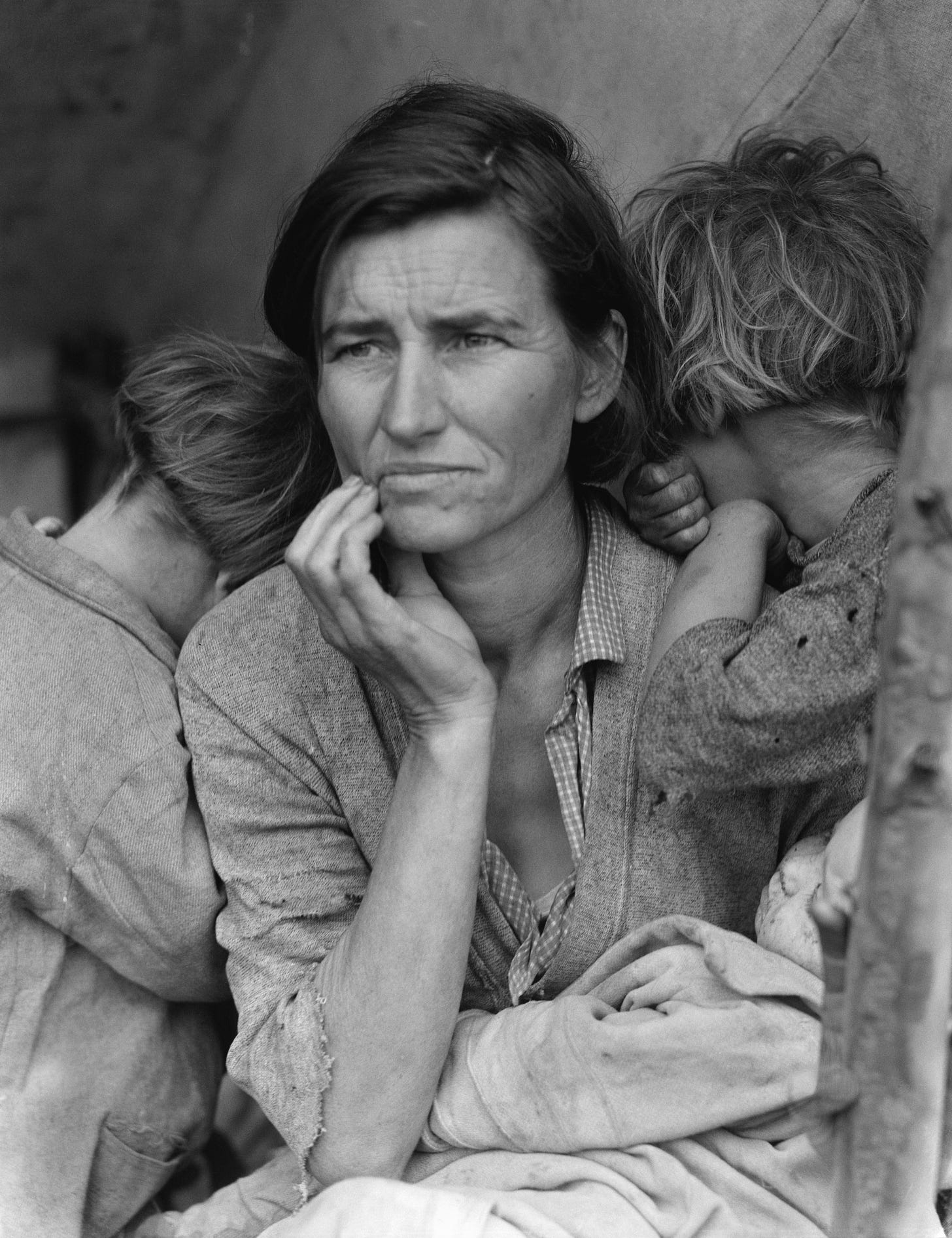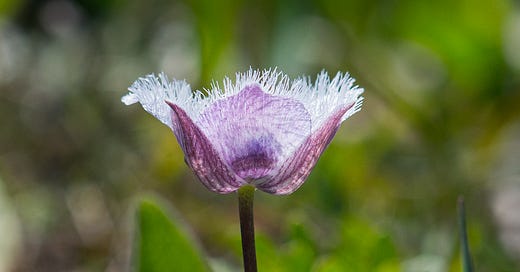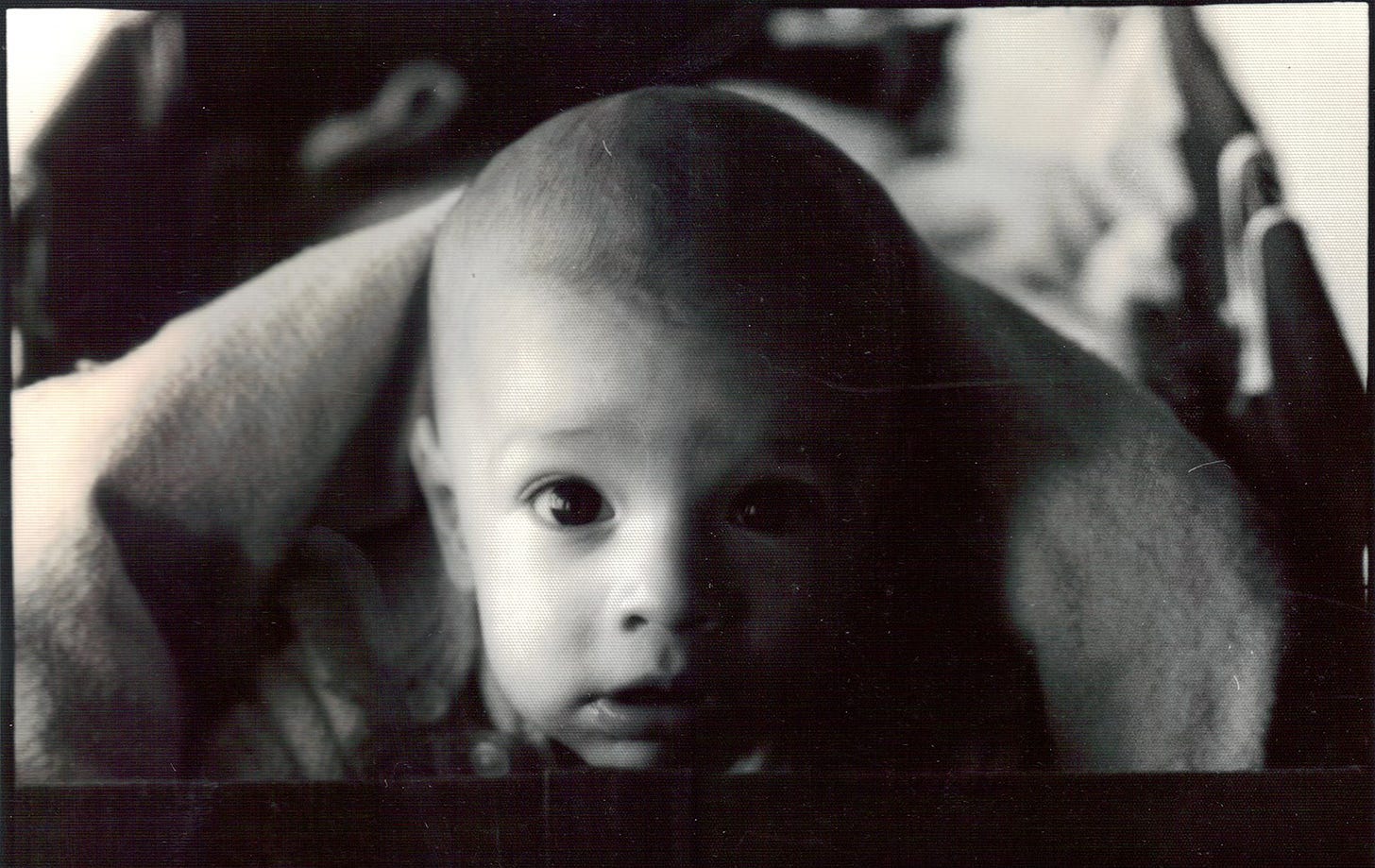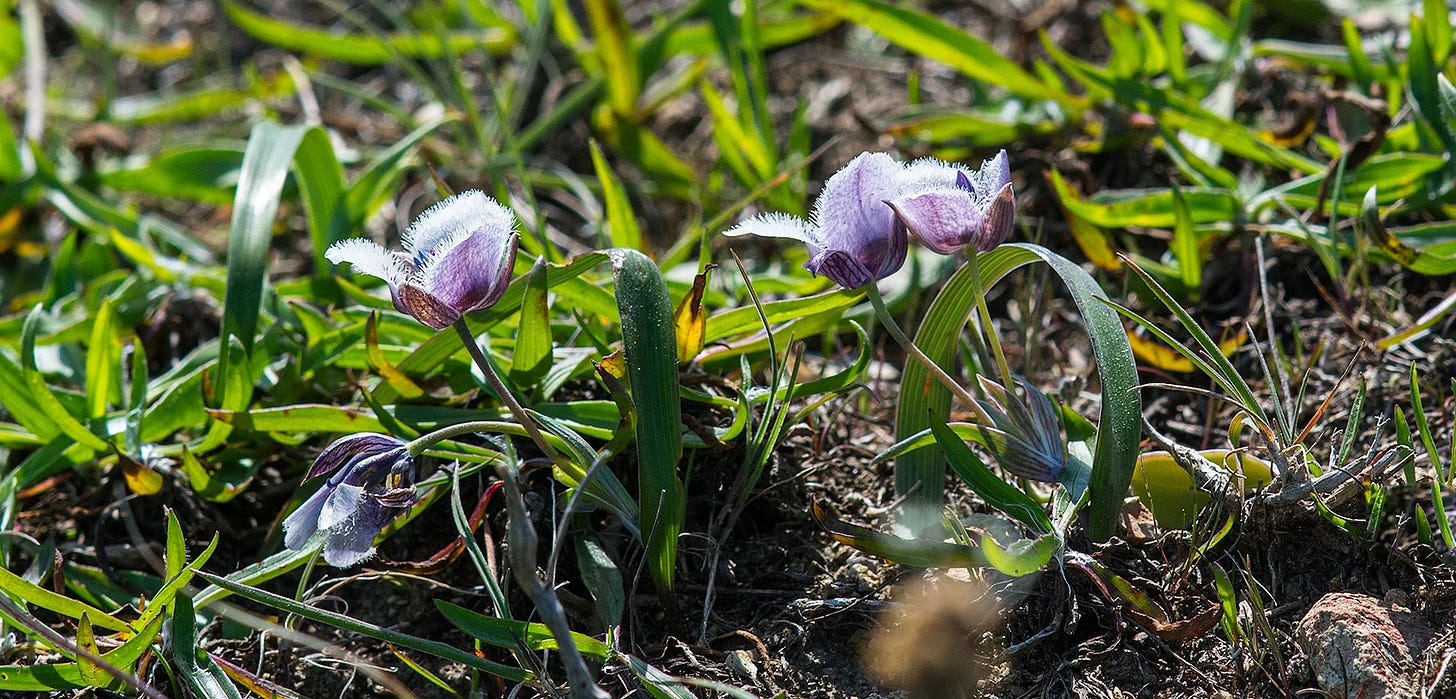A Wall Collage of the Human Family
[Soulful Experiences] Photography in empathic attunement to humans and flowers

After the drastic changes my family went through when the dictatorship took over (and lasted 22 years), my father was able to get work as an engineering researcher in a laboratory in another country. The Portuguese, who were still living under the constraints of an older autocratic regime, had respect for his contribution to technologies of construction and gave him a job.
For my mother, myself and my brother, this now meant a transatlantic move, which in those days could be done by ship, allowing for more luggage. In preparation, our task was to go through all our belongings, selecting what we could take in trunks and suitcases to create a sense of home. My father had rented a house on the outskirts of Lisbon with room for my mother’s art studio, and from where I could walk to school.
As part of this big endeavor, I was to go through piles of LIFE and ParisMatch magazines they had collected for years, cutting off and saving my favorite pages.
Photos told stories before video journalism
With your eyes of today, imagine a relatively recent time before video journalism.
Since Gutenberg, for a long time we had printed text with some engravings or small images, and it was a big change when this evolved into larger magazines. Printing technology and transportation made it possible for magazines to become windows through which people saw what was happening around the world.
For some time, large printed editions contained the most striking photo journalism that had ever been created, highlights of an era in which master photographers like Alfred Eisenstaedt, Margaret Bourke White, Dorothea Lange, along with photographer’s like Robert Capa, Henri Cartier Bresson, Werner Bischof were featured in large pages of astounding quality black and white imagery.
I went through each issue, touching the quality printed imagery and selecting what struck my soul. Some iconic photos, I later learned, had struck people’s heart around the world, becoming part of history. I saved the best of what I found in these pages.
The Family of Man historic exhibit
After crossing the ocean from Santos to Lisbon, we arrived at the house my father found for us, and I had to figure how to make my strange high ceiling room feel like a place I wanted to be in. My mother suggested we “wheat glued” a layer of newspaper up one whole wall, as a base for a full collage of the magazine cuttings. In this way, a remarkable collage of the human family came together!

As I dive into the memories of those moments, I remember the excitement of selecting the placement and assembling the groupings of pictures.
The feelings evoked by these images rippled through my being: I saw faces of people going through significant moments of the human experience, often dramatic and in many cases tragic, and I was touched by how moving those images could be.
In a very special place of honor, I placed images that were part of an iconic exhibit at New York City’s MoMA, curated by Edward Steichen, containing 503 photographs from 68 countries, that had been called: The Family of Man. I had looked through the book of that exhibit many times, and recognized many of these images by heart.
For the almost two years that I lived in that room, my soul was primed from looking at this display of masterful photography every day.
A sad ending and the tearing of the wall
On a trip to São Paulo for an exhibit of her art, my mother made the decision to leave my father, and, through a friend, sent the message with a request for me and my brother to be sent to Brazil to live with her.
Only two scenes stayed in my mind amidst the fog of what I now know as trauma.
The first is of me standing in that house’s dining room with my father and my brother, hearing the friend messenger convey that my mother was not coming back. Freezing shock. The other scene I remember was of me tearing down my photography wall. These images had kept me company for all those years, and my mother’s smart technique worked: the wheat glue got cleaned out, leaving the wall intact.
A 13 year career as a professional photographer
My first camera, a Zeiss, was the immensely valued gift my father brought back to me from Europe, on my request, when he eventually returned from Portugal.
Teaching myself with dedication, I went on to get my first job assisting at a photo lab, and set up my first darkroom, adapting my grandmother’s biopsy exam lab. After only a year or so, I got a “job in training” to work alongside a film crew, that started me off on a solid career that I never thought I would leave.
Stories expressed through and beyond faces
What was asked from us as photographers, in those days, was to capture images in ways that told stories. This required tuning into what we could “read”, capturing the almost unseen language of expressions revealed by light, always being sensitive to the unique signature of each being.
Diving and dancing enabled me as a photographer
I have always lived photography engaging my whole body. Finding the best angles may require lying flat on the ground, moving around subjects, asking them to move, positioning them in the best light.
When photographing children, lowering our bodies to the level they are at, engaging, looking at them in the eye (through the eye of the camera) and more.
Included was also lots of impromptu travel, flying in small airplanes and always carrying the heavy equipment professionals needed to use in those days.
Motherhood and changes in career direction
In later posts I will share further changes that led me to follow the flowers and more fully align with my calling. For now, I will say that staying closer to my kids led me to choose for a predictable routine, ending the free lance photographer career.
Becoming an attuned photographer of flowers
From what happened in between, that I am skipping for now, I found myself approaching my flower subjects with a similar mobility and attunement that I had, early on, when doing portraits of humans.
The Star Tulip showed me its best angles
Portraits of flowers have also involved attuning and learning with them, a great example of this being my repeated encounters with the Star Tulip flower
The Star Tulip Calochortus tolmiei is a close relative of the Mariposa Lily, described in one of my foundational posts on Plant Archetypes. If you have not yet done that, please do read my introduction on Plant Archetypes as Blueprints of Sanity.
When you think of the Mariposa Lily Calochortus leichtlinii being one that grows high up in the mountains, consider the Star Tulip Calochortus tolmiei, its relative, growing very close to the edge of the ocean, along the Northern California coastal edge all the way up to Oregon.
I first got to meet it during a walk at Chimney Rock, a peninsula that extends off into the windy Pacific ocean. With my dear husband Stephen, we were led by dear flower essence practitioner and researcher Jane Bell who knew where they bloomed. Had she not been there to show it to us, we would probably have missed it: the flower is very small, growing very close to the ground hidden amongst the grasses. The name of its whole species, Calochortus, means beautiful grass.
At other times of the year it will disappear, its little bulbs surviving underground, but in the early Spring, especially when the rains have been abundant through the winter, these tiny and discreetly colored flowers emerge and gently open up towards the sky.
It took me many Spring visits, year after year, for this flower to teach me how to approach and depict it in a way that will show its full gesture.
Every year we had to find it again. Each time I would gently sit and then lay my body with belly glued to the ground, honoring the emerging gesture of its tiny inflorescence.
Star Tulip and Yellow Star Tulip flower essences: feeling, sensing, attuned and sensitive receptivity
From these first contacts to further learning with it in years of practice, my intimate resonance with this tiny flower and its Plant Archetype has been established forever.
I am certain, with all of my being, that its teachings are deeply related to this ability to finely attune and see - listen - perceive, with earthly senses as well as all other available senses that comprise the range of feelings of the Soul.
My mentors and dear friends Patricia Kaminski and Richard Katz have researched its flower essence over the decades and have gifted us with a wealth of experience in its application, also conveyed through their videos and books.










It is so good to hear more of your personal story! I want to hear more, please. The weaving in the flower essence with your life chapters is so beautiful; it reminds me how nature is always interwoven with us whether we are present to it or not. XX
It is profoundly touching to see how the roots of your story connect so deeply to the powerful work you do today. You are a wonder.